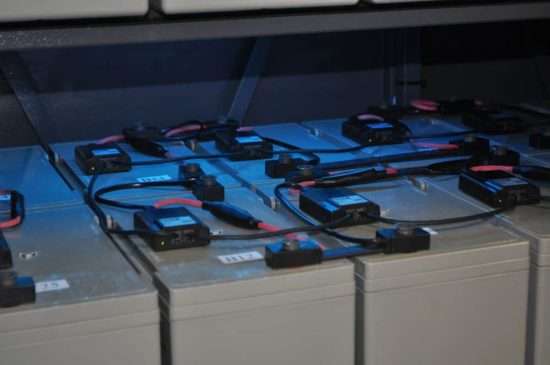UPS Battery Maintenance 101 Leave a comment
It’s a famous reality withinside the enterprise that the battery is the maximum prone part of a UPS. In reality, battery failure is the main purpose of load loss. Understanding a way to nicely preserve and control UPS batteries can’t handiest make bigger battery carrier existence, however, it may additionally assist save you pricey downtime.
Ecmweb Com Ops Maintenance 010ecm M Fpic1
The maximum not unusual place form of battery utilized in today’s UPSs is the valve-regulated lead-acid (VRLA) battery, additionally called a sealed or renovation-unfastened battery. VRLA batteries are sealed, typically inside polypropylene plastic, which gives the gain of now no longer containing any sloshing liquid that would leak or drip. Because water can not be brought to VRLA batteries, recombination of water is essential to their existence and health. In addition, any aspect that will increase the charge of evaporation or water loss, including temperature or warmth from the charging current, reduces the existence of the battery.
Let’s test a number of the maximum often requested questions in terms of UPS battery renovation.
1. What is the “stop of beneficial existence?”
The IEEE defines a “stop of beneficial existence” for a UPS battery as being the factor whilst it may now no longer deliver 80% of its rated capability in ampere-hours. When your battery reaches 80% of its rated capacity, the growing old system accelerates, and also you must update it.
2. Is there any distinction between the batteries utilized by smaller UPSs (250VA to 3kVA range) and those utilized by large UPSs?
While fundamental battery technology — and the dangers to battery existence — continue to be equal irrespective of UPS size, there are a few inherent variations among massive and small applications. First, smaller UPSs usually have the handiest one VRLA battery that helps the burden and calls for renovation. As structures get large, growing battery capability to guide the burden receives greater complicated. Larger structures can also additionally require a couple of strings of batteries, introducing complexity to battery renovation and guide. Individual batteries ought to be monitored to save you an unmarried horrific battery from taking down a whole string and placing the burden at risk. In addition, as structures get large, the usage of wet-molecular batteries end up a great deal greater, not unusual place.
3. My UPS has been in the garage for greater than a year. Are the batteries nevertheless right?
As batteries take a seat down unused, without a charging regimen, their existence will decrease. Due to the self-discharge traits of lead-acid batteries, it’s miles endorsed you fee them each 3 to 4 months of the garage. Otherwise, an everlasting lack of capability will arise among 18 and 30 months. To lengthen shelf existence without charging, save batteries at 10°C (50°F) or less.
4. What is the distinction between warm-swappable and user-replaceable batteries?
Hot-swappable batteries permit the batteries to be modified out whilst they are running. User-replaceable batteries are typically observed in smaller UPSs and require no unique gear or schooling to update. Batteries may be warm-swappable and user-replaceable.
5. How is battery runtime affected if I lessen the burden at the UPS?
The battery runtime will grow if the burden is reduced. As a standard rule, in case you lessen the burden via way of means of the half, you triple the runtime.
6. If I upload greater batteries to a UPS, can I upload a greater load?
Adding greater batteries to a UPS can grow the battery runtime to guide the burden. However, including greater batteries to the uses now no longer grow the capability of the UPS. Be positive your UPS is satisfactorily sized on your load, then upload batteries to suit your runtime needs.
7. What is the common lifespan of UPS batteries?
The preferred lifespan for VRLA batteries is 3 to 5 years. However, anticipated existence can range substantially because of environmental conditions, range of discharge cycles, and ok renovation. Have an everyday agenda of battery renovation and tracking to make sure you understand whilst your batteries are accomplishing the stop in their existence.
8. Does the want to have a load on it to fee its batteries?
Generally, the uses now no longer require a minimum load to fee its batteries. Once related to a preferred delivery of electricity (thru entering plug or hardwiring), your UPS must fee its batteries irrespective of how a great deal load, if any, is connected to it.
9. How are you able to make sure UPS batteries are in the right situation and feature the most holdover withinside the occasion of an energy failure?
You must have us and its batteries very well inspected and examined via way of means of an educated area technician. On smaller UPS models, you could regularly provoke a self take a look at of the unit via way of means of urgent a button at the front panel.
10.What is thermal runaway?
Thermal runaway happens whilst the warmth generated in a lead-acid molecular exceeds its capacity to use up that warmth, which could result in an explosion, particularly in sealed cells. The warmth generated withinside the molecular can also additionally arise with no caution symptoms and symptoms and can be due to overcharging, immoderate charging, inner bodily damage, inner brief circuit, or a warm environment.

